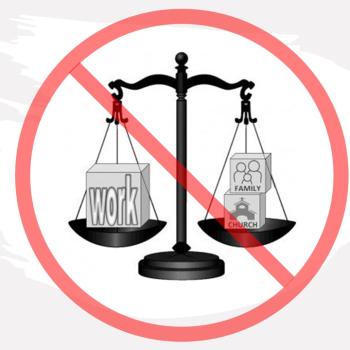 For the days leading up to and after CCO’s Jubilee Conference, I am going to do a series on the Four-Chapter Gospel story of Creation, Fall, Redemption, & Restoration. Jubilee is an annual college student conference that has always been about the Four-Chapter Gospel and the importance of Vocation to participating in the mission of God. Each of the four main sessions focuses on the chapters one-by-one, and the breakout workshops focus on callings and how to glorify God in and through the various vocations college students are pursuing.
For the days leading up to and after CCO’s Jubilee Conference, I am going to do a series on the Four-Chapter Gospel story of Creation, Fall, Redemption, & Restoration. Jubilee is an annual college student conference that has always been about the Four-Chapter Gospel and the importance of Vocation to participating in the mission of God. Each of the four main sessions focuses on the chapters one-by-one, and the breakout workshops focus on callings and how to glorify God in and through the various vocations college students are pursuing.
So the first chapter is “Creation.” Let’s focus on one aspect of the Creation: The creation of the amazing imago Dei (image of God).
So That They May Rule
The pinnacle of the creation are the humans, created in God’s image to be placed in charge of the creation as the King’s vice-regents. They are given authority and the mandate to make something of the world God has created.
“Then God said, ‘Let us make mankind in our image, in our likeness, so that they may rule over the fish in the sea and the birds in the sky, over the livestock and all the wild animals, and over all the creatures that move along the ground.’ So God created mankind in his own image, in the image of God he created them; male and female he created them. God blessed them and said to them, “Be fruitful and increase in number; fill the earth and subdue it. Rule over the fish in the sea and the birds in the sky and over every living creature that moves on the ground.” (Genesis 1:26–28)
There was a purpose for God creating humanity as the imago Dei: “so that they may rule.”
Gerald Bray, in his article on the image of God in the New Dictionary of Biblical Theology wrote,
“The biblical picture reflects the ancient Near Eastern idea of images as statues representing the king and therefore partaking of his authority in some way. If that is true, the designation of Adam as the image of God might mean that he was intended to be God’s viceroy on earth.”
J. Richard Middleton’s conclusion based on the ancient Near Eastern context in which Genesis was written is that it was written as an apologetic against the common stories of that time. In those stories, only kings had the status of being images of the gods. But not so with the Bible. All of humanity is created in the image of God, not just those who already lord it over people, and not just men!
“Humanity is dignified with a status and role vis-à-vis the nonhuman creation that is analogous to the status and role of kings in the ancient Near East vis-à-vis their subjects. Genesis 1…thus constitutes a genuine democratization of ancient Near Eastern royal ideology. As imago Dei, then, humanity in Genesis 1 is called to be the representative and intermediary of God’s power and blessing on earth.” (The Liberating Image: The Imago Dei in Genesis 1)
As Psalm 8 proclaims about the wonder of God’s human creatures,
“Yet You have made him a little lower than God, And You crown him with glory and majesty! You make him to rule over the works of Your hands; You have put all things under his feet.”
Dallas Willard wrote,
“In creating human beings God made them to rule, to reign, to have dominion in a limited sphere. Only so can they be persons.” (The Divine Conspiracy)
Mandated to Get to Work
Not only are humans to “rule,” they are also told to do other things. Michael Wittmer explains,
“God commanded his freshly minted humans to ‘be fruitful,’ ‘increase in number,’ ‘fill the earth,’ ‘subdue it,’ and ‘rule’ over the rest of creation. These five distinctives to govern and develop the original creation are what theologians call the ‘creation mandate’ or ‘cultural mandate.’ It is the first command God ever gave us, and he has never taken it back.” (Heaven Is a Place on Earth)
Albert Wolters explains what the cultural mandate entails, writing,
“Although God has withdrawn from the work of creation, he has put an image of himself on the earth with a mandate to continue… People must now carry on the work of development: by being fruitful they fill it even more; by subduing it they must form it even more. Mankind, as God’s representatives on earth, carry on where God left off. But this is now to be a human development of the earth. The human race will fill the earth with its own kind, and it will form the earth for its own kind. From now on the development of the created earth will be societal and cultural in nature.” (Creation Regained)
Work is Fundamental to Our Existence
So… How do humans carry out this first mandate or commission from God?
One word: Work.
Miroslav Volf makes the point that humanity’s calling in God’s image can only be fulfilled through work.
“The text does not mention work explicitly, but since human beings can fulfill their God-given task only by working, it is obvious that this locus classicus of Christian anthropology considers work to be fundamental to human existence.” (Work in the Spirit)
We were created by God to represent him in the world, to do what he would do. To continue the work that he began in the creation. In other words, we were created with work in mind.
Image courtesy Coalition for Christian Outreach, Jubilee Conference












